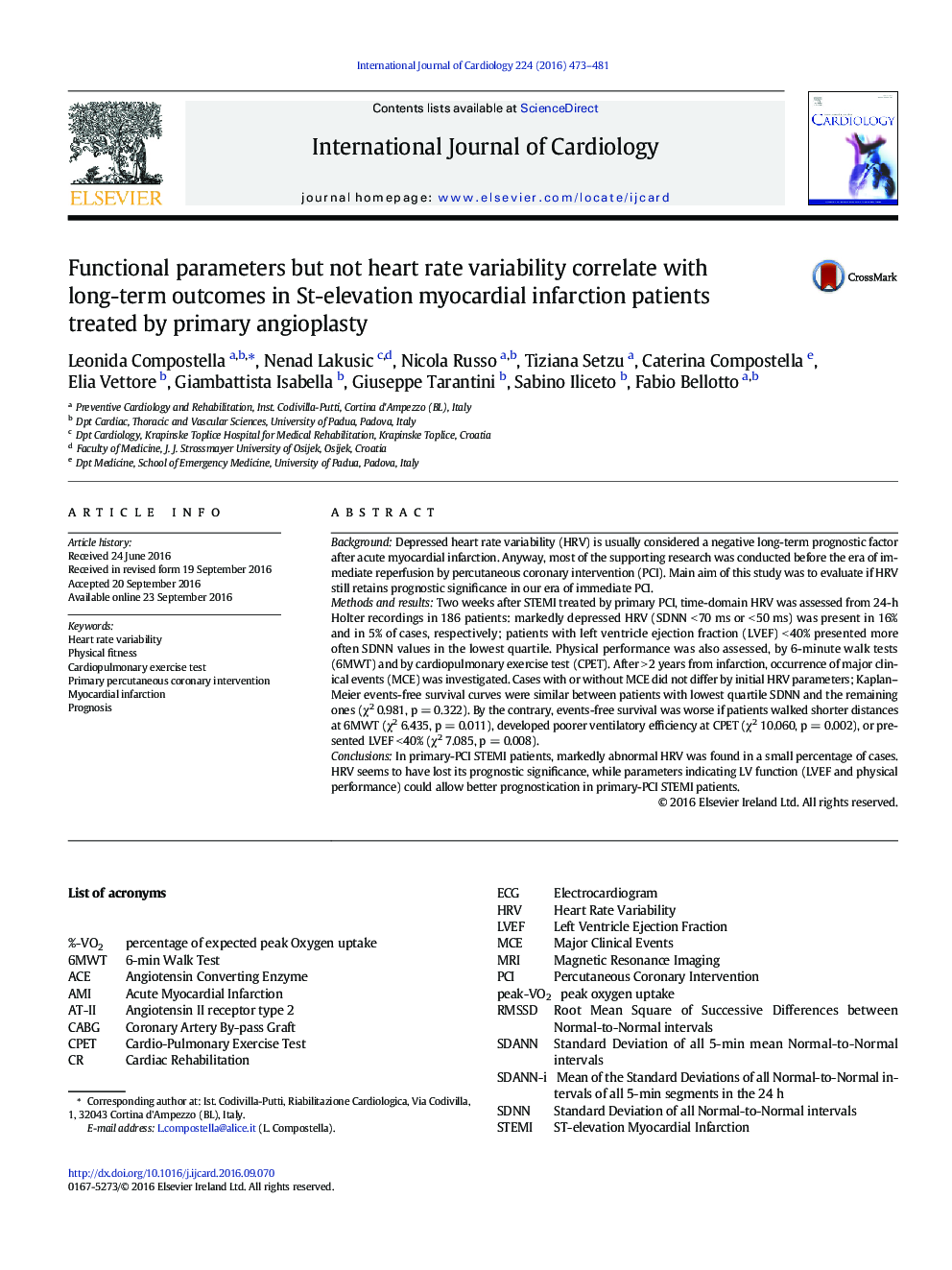| Article ID | Journal | Published Year | Pages | File Type |
|---|---|---|---|---|
| 5962473 | International Journal of Cardiology | 2016 | 9 Pages |
BackgroundDepressed heart rate variability (HRV) is usually considered a negative long-term prognostic factor after acute myocardial infarction. Anyway, most of the supporting research was conducted before the era of immediate reperfusion by percutaneous coronary intervention (PCI). Main aim of this study was to evaluate if HRV still retains prognostic significance in our era of immediate PCI.Methods and resultsTwo weeks after STEMI treated by primary PCI, time-domain HRV was assessed from 24-h Holter recordings in 186 patients: markedly depressed HRV (SDNN < 70 ms or < 50 ms) was present in 16% and in 5% of cases, respectively; patients with left ventricle ejection fraction (LVEF) < 40% presented more often SDNN values in the lowest quartile. Physical performance was also assessed, by 6-minute walk tests (6MWT) and by cardiopulmonary exercise test (CPET). After > 2 years from infarction, occurrence of major clinical events (MCE) was investigated. Cases with or without MCE did not differ by initial HRV parameters; Kaplan-Meier events-free survival curves were similar between patients with lowest quartile SDNN and the remaining ones (Ï2 0.981, p = 0.322). By the contrary, events-free survival was worse if patients walked shorter distances at 6MWT (Ï2 6.435, p = 0.011), developed poorer ventilatory efficiency at CPET (Ï2 10.060, p = 0.002), or presented LVEF < 40% (Ï2 7.085, p = 0.008).ConclusionsIn primary-PCI STEMI patients, markedly abnormal HRV was found in a small percentage of cases. HRV seems to have lost its prognostic significance, while parameters indicating LV function (LVEF and physical performance) could allow better prognostication in primary-PCI STEMI patients.
